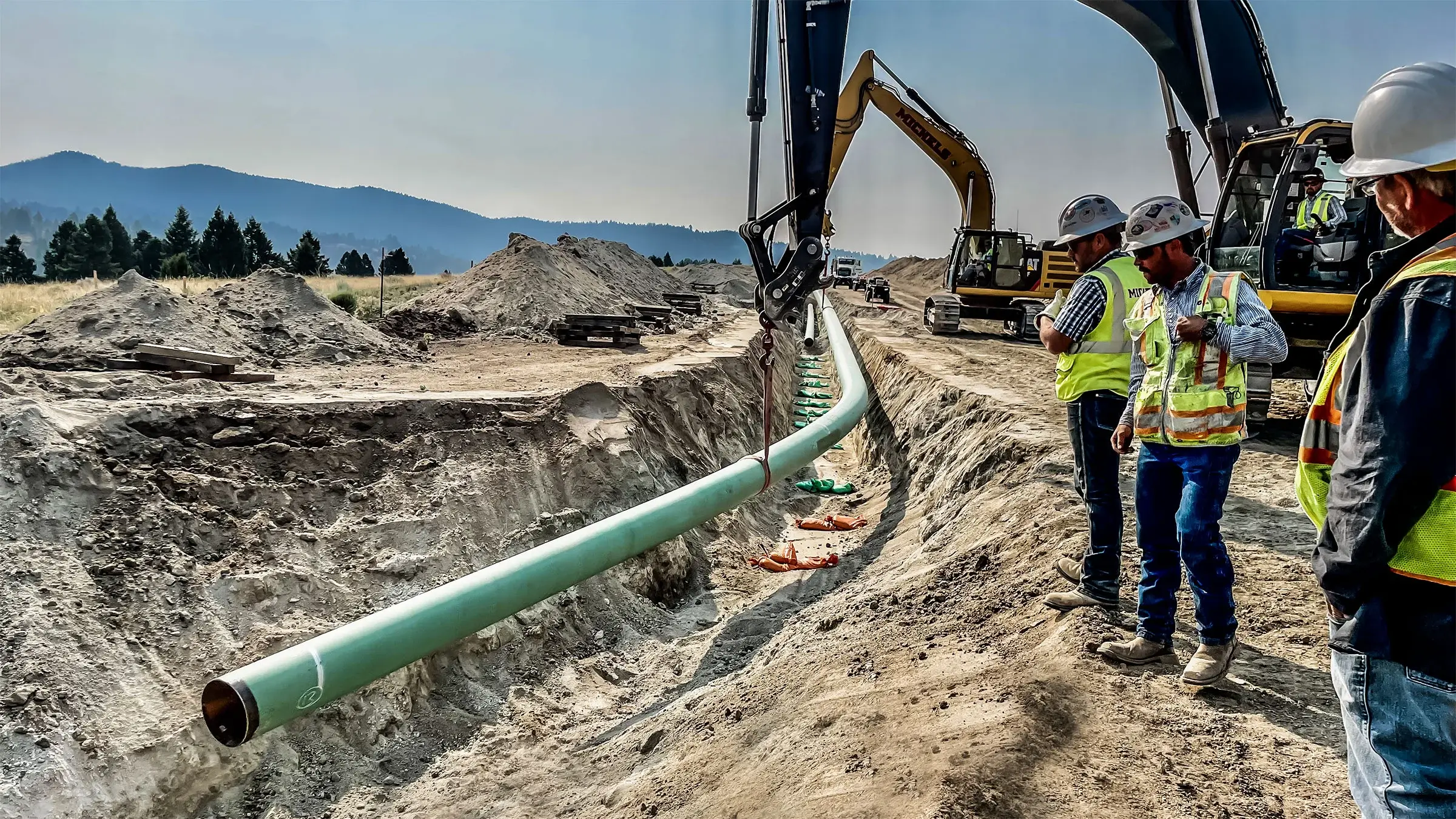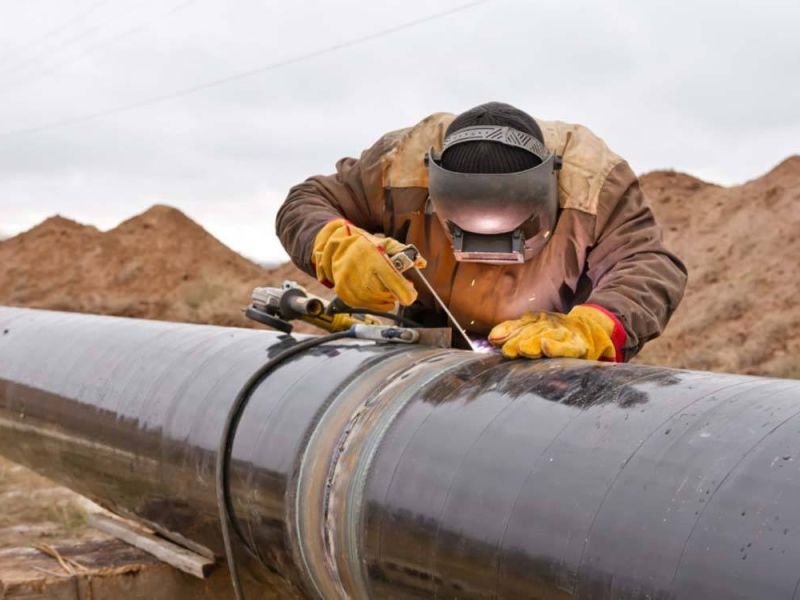Case Study: Creek Pipe Texas and the Impact of Real-Time Water Analytics
A Comprehensive Guide to Understanding Pipes and Their Duty in Building and construction
Pipelines are crucial elements in building, serving crucial features in water, waste, and gas monitoring. Their choice and application can considerably influence a structure's performance and safety. Various materials, such as PVC, copper, and PEX, supply distinctive advantages matched to specific demands (Creek Pipe Texas). Comprehending these factors is vital for any construction job. As one discovers the complexities of pipes, the ramifications for compliance and public health and wellness ended up being increasingly evident
The Importance of Water Lines in Building and construction
Pipes act as important channels in building and construction, promoting the motion of water, gas, and waste throughout buildings and facilities. Their function prolongs past plain transportation; they are vital for making sure the performance and safety of industrial and household environments. Properly installed pipelines add to the efficient circulation of resources, allowing daily activities such as cooking, bathing, and heating. Pipelines play a critical function in waste administration, making certain that sewer and wastewater are effectively eliminated from living spaces.The value of pipelines is additionally mirrored in their influence on public health and wellness. Poor or damaged piping systems can lead to contamination and harmful conditions, making top quality products and installment methods essential. Furthermore, pipes should follow various structure codes and laws, which are made to secure both passengers and the atmosphere. Consequently, the significance of pipes in construction encompasses both practical capability and crucial health and wellness considerations.
Kinds Of Water Lines Used in Structure Projects
Numerous kinds of pipes play a significant duty in structure tasks, each created to meet details requirements and applications. Among one of the most frequently used pipeline types are PVC, which is immune and lightweight to corrosion, making it excellent for drain and air vent systems. CPVC pipelines, similar to PVC, can hold up against higher temperatures, usually used in hot water systems. Copper pipes are known for their longevity and integrity, often used in pipes and heating applications. Galvanized steel pipelines, while much less common today, were when a standard for water lines because of their strength. In Addition, PEX (cross-linked polyethylene) pipes are getting popularity for property pipes due to their versatility and resistance to scaling and chlorine. Cast iron pipes are favored for their sound-dampening properties, typically utilized in waste and dirt systems. Each pipeline kind serves distinct functions, making certain efficient operation in building tasks.
Common Products for Pipes and Their Residence
In building and construction, the selection of pipeline materials is crucial for making sure longevity and functionality. Metal pipes provide toughness and resistance to high stress, while plastic pipelines provide lightweight and corrosion-resistant options. Composite pipes integrate the advantages of both products, making them functional alternatives for numerous applications.
Metal Pipe Options
Metal pipes are important parts in building and construction, offering a range of options that satisfy different applications and environmental conditions. The most usual products consist of steel, copper, and cast iron. Steel pipelines are known for their strength and toughness, making them ideal for high-pressure applications. Copper pipelines are preferred for their rust resistance and antimicrobial homes, typically used in pipes systems. Cast iron pipelines give superb audio insulation and are excellent for waste and water drainage systems. Each metal type has distinctive benefits; for example, galvanized steel can stand up to rust, while stainless steel offers superior deterioration resistance. Choosing the appropriate steel pipe relies on aspects such as cost, ecological exposure, and the specific needs of the building and construction job.

Plastic Pipeline Advantages
Plastic pipes have actually acquired appeal in building due to their light-weight nature and convenience. These pipelines, made from materials such as PVC, CPVC, and PE, offer excellent resistance to deterioration and chemical damage, making them suitable for various applications. Their ease of installation more improves their appeal, as they can be cut and signed up with without special devices. In addition, plastic pipes are typically extra affordable contrasted to steel options, adding to reduced total project expenses. Their smooth interior surface areas lower friction and improve flow prices, while insulation properties help preserve temperature level control in pipes systems - Creek Pipe Company LLC. With a variety of configurations and sizes offered, plastic pipelines effectively fulfill the varied needs of modern construction jobs
Compound Pipe Characteristics
Composite Get More Info pipes combine various materials to leverage their individual toughness, causing boosted efficiency and sturdiness. Normally, these pipelines are composed of layers that may include plastics, steels, and porcelains, each contributing unique properties. The internal layer might be made of a corrosion-resistant material, while the outer layer supplies toughness and impact resistance. This combination permits composite pipelines to hold up against severe temperature levels and stress, making them suitable for a vast array of applications, including water system and commercial procedures. In addition, composite pipes are frequently lighter than typical products, promoting easier handling and installation. Their versatility and adaptability to different environments make them a favored choice in modern construction projects, ensuring durability and effectiveness in liquid transportation systems.
Applications of Water Lines in Plumbing Equipments

Electrical Avenues: The Role of Piping in Wiring
In modern construction, electric conduits play a crucial duty in making certain the effective and secure routing of electrical circuitry throughout structures. These pipelines provide a protective path for electric cords, guarding them from physical damages and ecological factors. Different products, such as PVC, steel, and adaptable avenues, are utilized depending on the particular requirements of the installation.Furthermore, avenues aid in organizing wiring systems, minimizing the danger of electric threats like short circuits or fires. They likewise assist in easier maintenance and upgrades, as wires can be accessed and replaced without considerable interruption to the structure.Proper installment of electric conduits is vital for compliance with building ordinance and safety and security policies. This structured strategy not only enhances the durability Full Article of the electric system but likewise adds to the total safety and functionality of the building, making electrical avenues essential in contemporary building techniques.
Selecting the Right Pipeline for Your Task
How can one guarantee the right pipeline choice for a building and construction project? The selection procedure begins with comprehending the particular requirements of the project, consisting of the kind of fluids being transferred, pressure scores, and environmental conditions. Product alternatives, such as Copper, steel, and pvc, should be reviewed based on sturdiness, corrosion resistance, and thermal properties.Next, one have to think about the pipe's size and flow ability to determine efficient procedure. Regulatory requirements and codes should additionally be followed, as they dictate the appropriate materials and practices for certain applications. Consulting with experts and making use of substantial resources can additionally aid in making educated decisions.Finally, assessing the cost-effectiveness of various choices is vital, stabilizing initial costs with long-term maintenance and substitute expenses - Creek Pipe Company LLC. By meticulously examining these elements, one can with confidence choose the most suitable pipeline for their building and construction project, ensuring both capability and compliance

Maintenance and Inspection of Pipes in Building and construction
Appropriate choice of pipes sets the foundation for their lasting efficiency, making maintenance and evaluation vital elements in building. Routine upkeep assurances that any possible concerns, such as leakages, deterioration, or clogs, are determined and attended to immediately, decreasing pricey fixings and job hold-ups. Scheduled assessments, including visual evaluations and pressure examinations, play an important role in reviewing the stability of pipe systems.Additionally, monitoring environmental elements, such as temperature changes and dirt conditions, can aid anticipate deterioration. Making use of sophisticated technologies, such as CCTV for indoor inspections, can improve the performance of upkeep initiatives. It is important to record inspection findings and upkeep tasks to establish a detailed history of the pipe systems. By focusing on upkeep and inspection, building professionals can prolong the life-span of their piping systems, ensuring they operate successfully and dependably throughout the project's period.
Frequently Asked Questions
Exactly How Do Pipes Impact Power Performance in Structures?
Pipelines substantially affect energy efficiency in buildings by regulating heating and cooling systems. Correct insulation and products lower power loss, while reliable plumbing designs reduce water usage, eventually bring about lower energy consumption and operational costs.
What Laws Govern Pipeline Installation in Building And Construction?
Rules governing pipe installation in building commonly consist of national and regional building codes, plumbing codes, and safety and security requirements. These warranty compliance with architectural honesty, material requirements, and wellness demands, advertising security and efficiency in building techniques.
Can Water Lines Be Recycled After Usage?
The question of pipe recyclability is significant. Lots of materials, such as steel and certain plastics, can be recycled properly. However, the problem and kind of pipeline influence reusing usefulness, requiring proper analysis prior to disposal.
Just How Do Climate Problems Influence Pipe Performance?
Weather significantly affect pipe efficiency. Extreme temperatures can trigger growth or contraction, while wetness may cause deterioration. In addition, heavy rainfall can raise soil stress, affecting security and overall functionality of the piping system.
What Are the Indications of Pipeline Failing to View For?
Indications of pipeline failing include leaks, uncommon sounds, staining of water, decreased water pressure, and noticeable deterioration. Routine examinations can help find these issues early, making certain and avoiding expensive fixings system performance in the long-term. Pipelines play a pivotal function in waste monitoring, making sure that sewer and wastewater are successfully removed from living spaces.The relevance of pipes is also shown in their effect on public health and wellness. In building and construction, the selection of pipeline products is critical for ensuring sturdiness and performance. Steel pipes offer strength and resistance to high stress, while plastic pipelines supply light-weight and corrosion-resistant options. Additionally, pipelines are made use of to eliminate wastewater, linking toilets, sinks, and drains to metropolitan sewer systems or septic tanks.Different types of pipes, such great post to read as PVC, copper, and PEX, are picked based on aspects like toughness, expense, and particular application requirements. Just how can one assure the ideal pipe choice for a building and construction project?